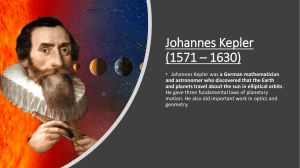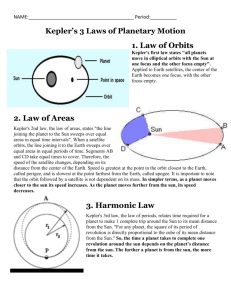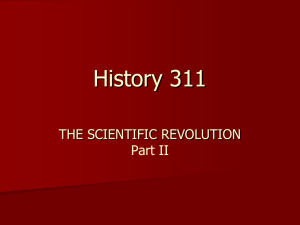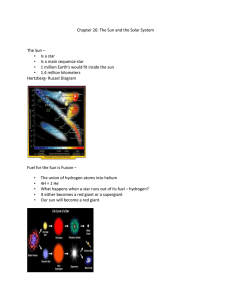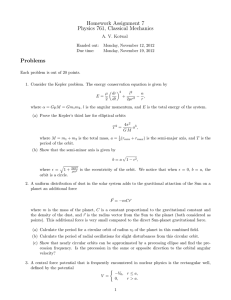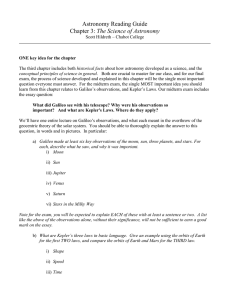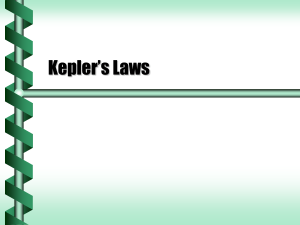ASTR1010_HW03
advertisement
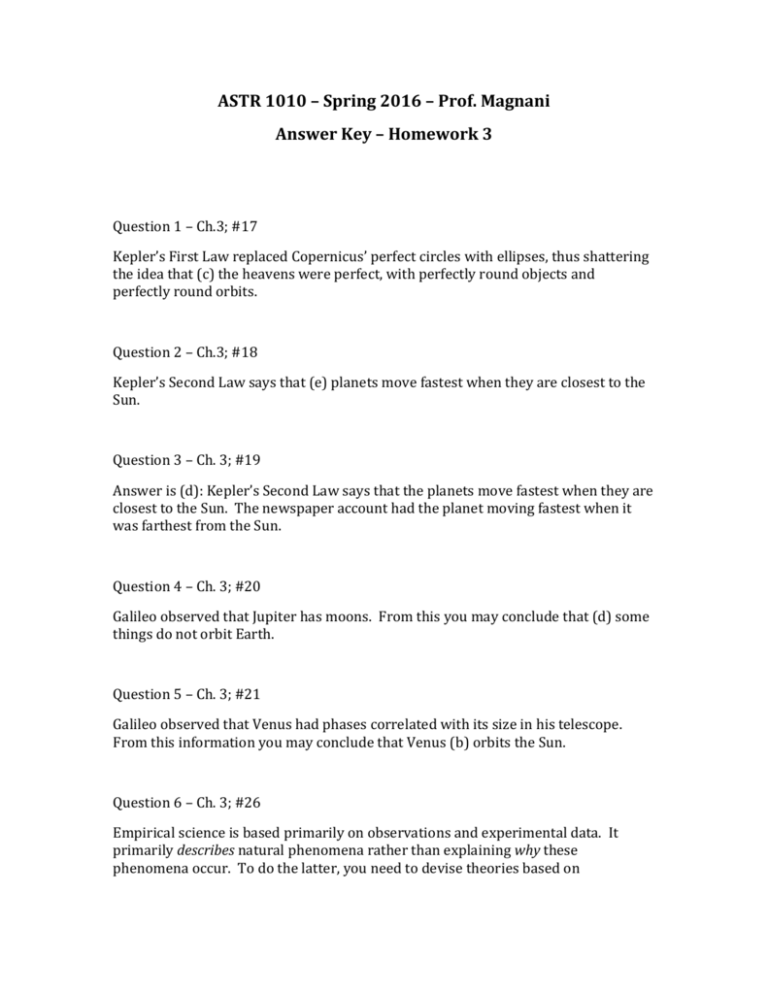
ASTR 1010 – Spring 2016 – Prof. Magnani Answer Key – Homework 3 Question 1 – Ch.3; #17 Kepler’s First Law replaced Copernicus’ perfect circles with ellipses, thus shattering the idea that (c) the heavens were perfect, with perfectly round objects and perfectly round orbits. Question 2 – Ch.3; #18 Kepler’s Second Law says that (e) planets move fastest when they are closest to the Sun. Question 3 – Ch. 3; #19 Answer is (d): Kepler’s Second Law says that the planets move fastest when they are closest to the Sun. The newspaper account had the planet moving fastest when it was farthest from the Sun. Question 4 – Ch. 3; #20 Galileo observed that Jupiter has moons. From this you may conclude that (d) some things do not orbit Earth. Question 5 – Ch. 3; #21 Galileo observed that Venus had phases correlated with its size in his telescope. From this information you may conclude that Venus (b) orbits the Sun. Question 6 – Ch. 3; #26 Empirical science is based primarily on observations and experimental data. It primarily describes natural phenomena rather than explaining why these phenomena occur. To do the latter, you need to devise theories based on fundamental principles that often arise from logic, rational thought, and Occam’s razor. Question 7 – Ch. 3; #28 Nothing is at the other focus. Question 8 – Ch. 3; #29 The semimajor axis is the characteristic “size” of an ellipse in the way that a radius is the size of a circle. Question 9 – Ch. 3; #30 A circular orbit has an eccentricity of 0. See Figure 3-10. Question 10 – Ch. 3; #31 a) The planet is moving the fastest at the perihelion point of its orbit. b) The planet is moving slowest at aphelion. Question 11 – Ch. 3; #32 Because p2 = a3 Question 12 – Ch. 3; #33 Inertia is the property that matter has that allows matter to resist acceleration. Another way of saying it is that it is the property that matter has that allows it to move at a constant velocity (recall that a constant velocity means there is no acceleration). The inertia of an object is measured by its mass (in other words, it is proportional to the mass). Question 13 – Ch. 3; #43 First, we need the sidereal period. Synodic period is 370 days. We are dealing with an outer (superior) planet so we must use 1/p = 1/e - 1/s, so 1/p = 1/365.25 1/370 = 0.002738 - 0.002703 = 0.000035 a) So, p = 2860 days = 78 years b) p2 = a3 with p measured in years and “a” in AU p2 = (18.3)3 = 6128 p = 78 years c) They’re the same! Question 14 – Ch. 3; #44 p2 = a3 ; p2 = (50)3 so p = 350 years Question 15 – Ch.3; #45 p2 = a3 ; (12)2 = a3 so a = 5.2 AU Question 16 – Ch. 3; #54 p 2 = a3 Here, avulc = 0.25 times Mercury’s distance from Sun = 0.25 * 0.387 = 0.0968 AU So, p = 0.0301 years = 11 days, or 1/8 of Mercury’s period. You could have gotten this right away, by realizing that if we write pmerc2 = amerc3 then, Vulcan would be pvulc2 = avulc3 = [(1/4) amerc]3 = [(1/64) amerc3 ] pvulc = (1/8)pmerc
